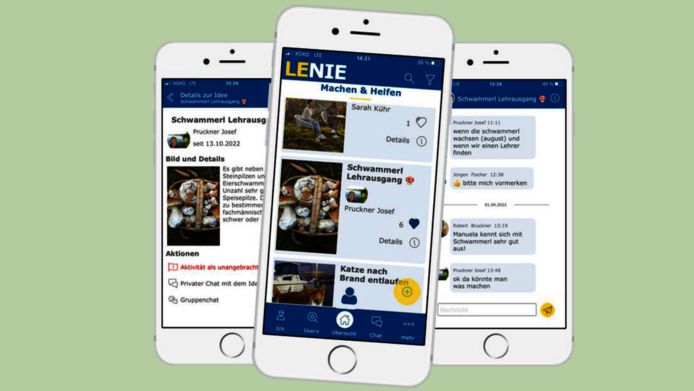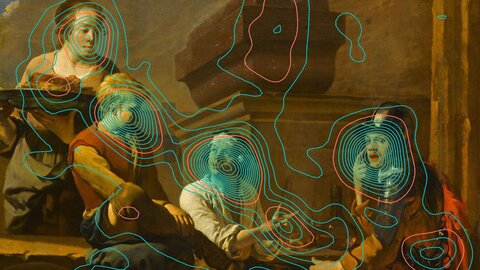From digital sheet music to online knitting circles
The team of researchers were flabbergasted by the wealth of creative digital solutions they encountered. Sports associations watched soccer games together via Zoom or organized shared training challenges, allowing team members to share their times via an app once they had completed a run. Marching bands digitalized their sheet music, and a rural Catholic youth organization whose weekly Confirmation preparation meetings were paused turned to a scavenger hunt app instead.
The “Goldhauben” (golden cap) heritage association provided striking evidence that digital solutions work across all age groups: “This Upper-Austrian tradition has its roots in women’s crafting circles. Many members stay active well past their 80th birthday.” They get together to repair their gold-embroidered caps, an artistic headwear that forms part of the region’s traditional attire. In addition to that, they also volunteer for social causes. “During the pandemic, the ‘Goldhauben’ groups organized, for instance, online knitting circles, and the digital solutions were no problem for any of the women,” Griesbeck shares.
The Linz-based start-up “Vereinsplaner” (association planner) also got in touch with the project team. The company develops digital solutions that help associations with, e.g., membership administration and finances. Uli Meyer and his team thus had the opportunity to apply their scientific expertise to a real-life example as opposed to a lab experiment (which had been the original plan). They also supported another real-life project in developing an app that brought together motivated people within a municipality to jointly carry out projects. This app titled LENIE (Leben in Niederösterreich – Living in Lower Austria) was initiated by the provincial government of Lower Austria.
Digital tools lack a latent function
Despite the wide variety of digital solutions used during the pandemic, a surprisingly small share survived into post-pandemic life. The oft-heard claim that many people and particularly older generations simply lacked the technical skills proved wrong. Uli Meyer and his team looked into the real reasons: “Associations have an obvious function: such as making music together, singing or, as is the case for the ‘Goldhauben’ members, engaging in embroidery. This is what sociologist Robert Merton refers to as the manifest function. But there is also a latent function, and for associations, it’s community, even though that’s less obvious.”
The important function of community became apparent, for instance, in a meeting of Protestant clergy at which a tool for coordinating volunteers was presented. Following the presentation, a pastor voiced his skepticism by pointing out that volunteering was not about efficiency, adding that volunteers preferred to personally talk to the pastor on the phone because it helped them keep in touch and feel appreciated. For Meyer, this confirms his findings: “The latent function of personal cohesion was often not considered when designing digital solutions in the past. That’s why many tools simply did not meet people’s needs. The tools that persisted and are still used today are the ones handling administrative, i.e., manifest, tasks, such as sharing sheet music or handling member administration.”







